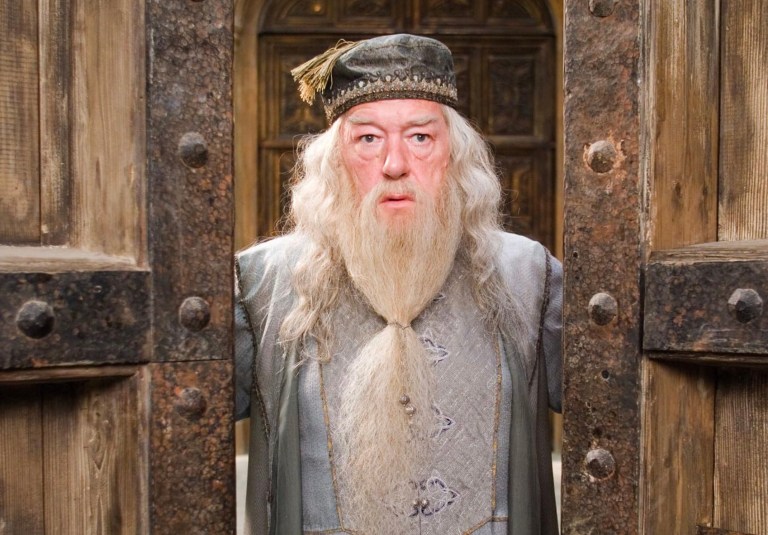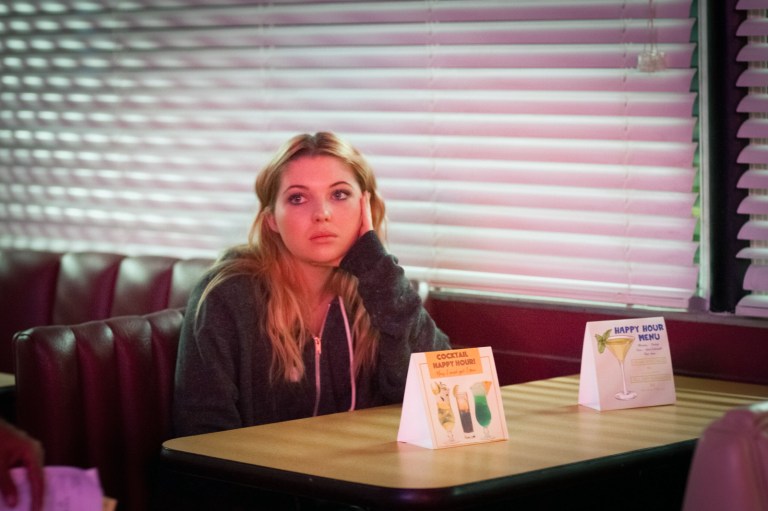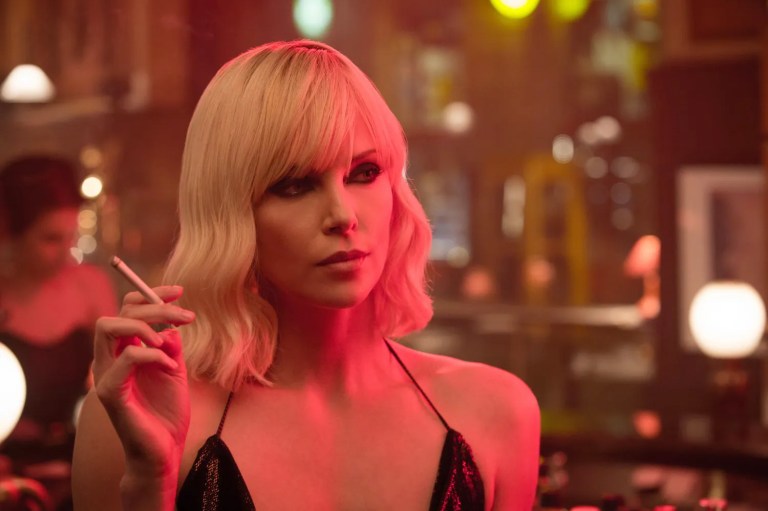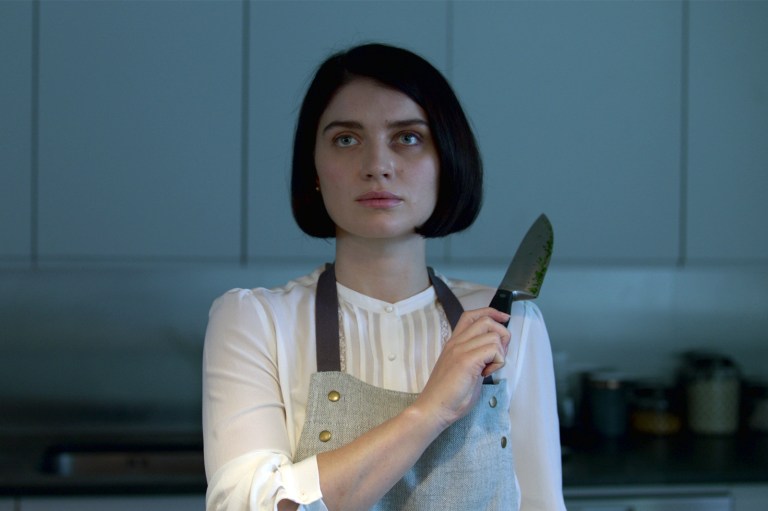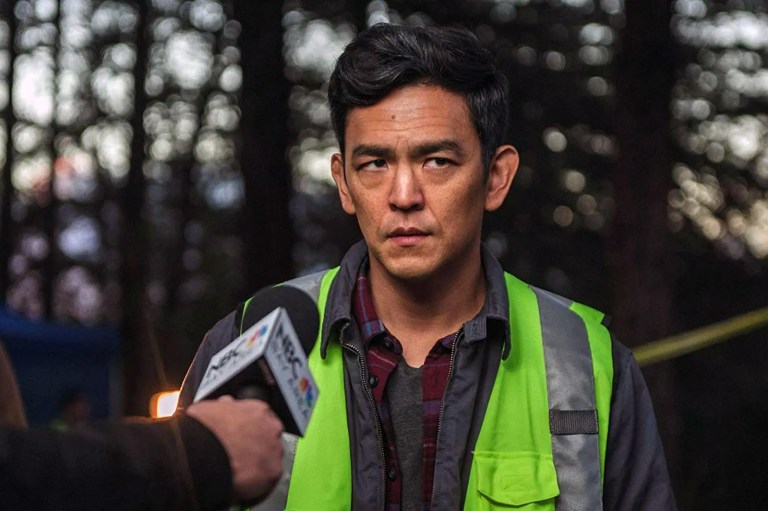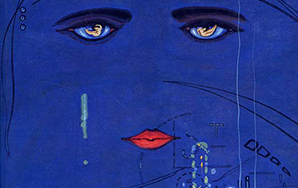
25 Things You Didn’t Know About ‘The Great Gatsby’
At the time of his death in 1940, Fitzgerald claimed to have made just $4,000 off the novel.
By ![]() Nico Lang
Nico Lang
1. In its initial publication, the novel received mixed reviews. Although championed by The New York Times, noted essayist and critic H.L. Mencken called it a “glorified anecdote” and others felt it to be a “minor” work and a comedown after The Beautiful and the Damned and This Side of Paradise. The New York Evening World claimed that Gatsby debunked the idea that Fitzgerald was one of the great writers of his generation.
2. The book was also a commercial flop. At the time of his death in 1940, Fitzgerald claimed to have made just $4,000 off the novel, believing that because of the strong cult of female readership in the era, the lack of a strong (or even remotely likable) female protagonist left the audience cold. (Others now blame the wealth of its characters in contrast to the hard economic times for most readers.) Fitzgerald worried that his work was doomed to be forgotten and left behind by time and regretted Gatsby. The New York Times’ obit on Fitzgerald even cited the novel as a sign he never reached his full potential.
3. Had he lived just ten years longer he would have witnessed popular reception warm to the novel. The Edmund Wilson edition of The Last Tycoon included the novel as a way to get readers to reconsider this work, and the book became a cult classic among an influential cadre of writers who felt critics’ misunderstood the novel.
4. The novel gained immense popularity during WWII as the critical mainstream came to embrace Fitzgerald’s work. The Armed Services Editions circulated 150,000 copies to troops (100,000 more than were sold during Fitzgerald’s lifetime).
5. During the fifties and sixties, the book became a staple of high school English lit curricula, and the novel remained a commercial success. By 1960, the book steadily sold 50,000 copies each year, and today it has sold over 25 million copies — 500,000 more each year. According to Scribner, the book’s publisher, it’s their most popular novel ever.
6. F. Scott Fitzgerald was a noted novelist even while he was alive, but it wasn’t how he made most of his income. Before his death in 1940, Fitzgerald published 160 short stories, almost four for every year of his life. His first draft of a proper novel The Romantic Egotist was finished in 1918 while he was at combat in World War I and he believed he would never survive the conflict to see it published. It would later see the light of day, many drafts later, under the name of This Side of Paradise.
7. Although industrious readers might have figured it out, Daisy Buchanan is largely seen as a surrogate for Fitzgerald’s “mad” wife, Zelda. When Fitzgerald initially proposed to Zelda, she shot him down, because he was too poor for her — hence the inspiration for Daisy. This is strange, as Nick Carraway is considered the F. Scott Fitzgerald stand-in, who is Daisy’ cousin and possibly gay (depending on your reading). Paging Dr. Freud.
8. Gatsby himself is open to a number of interpretations. Although it’s the opinion of his writer that Jay Gatsby was Jewish (nee James Gatz, associated with Meyer Wolfsheim), some have argued that Jay Gatsby was black.
9. Before settling on the now iconic title for the novel, F. Scott Fitzgerald juggled a number of different options. He threw around such mouthfuls as Among Ash-Heaps and Millionaires, On the Road to West Egg, Trimalchio in West Egg, Gold-Hatted Gatsby, The High-Bouncing Lover and Under the Red, White and Blue, the latter of which called upon the themes of dissolution with the Jazz Age and American ideology. Given Fitzgerald’s sometimes expat status and the fact that Fitzgerald wrote much of it in France, the latter makes relative sense, but Trimalchio in West Egg? Imagine presenting that to your Sophomore English class.
10. Despite the clunkiness of the title, Trimalchio didn’t come from nowhere. The name was taken from Petronius’ novel Satyricon, as Trimalchio is a notorious reveler and party host, a representation of lavish and ostentatious wealth. Trimalchio is name-dropped in the novel’s seventh chapter. After the lights fail to turn on to announce another Gatsby party, Fitzgerald writes, “Obscurely as it began, his career as Trimalchio was over.” Trimalchio also makes appearances in Les Miserables and Henry Miller’s Black Spring and the works of H.P. Lovecraft and Octavio Paz.
11. Francis Cugat designed the now classic cover art for the novel, and F. Scott Fitzgerald was just as impressed with its haunting imagery as readers have been; the design has become a mainstay in the popular consciousness. Fitzgerald was so taken with it that he rewrote the novel to place more emphasis on the symbol of the eyes, making T.J. Eckleburg’s business a larger motif of the work.
12. Meyer Wolfsheim, Gatsby’s business associate and fellow moonshiner, was based off a real person. He was inspired by Arnold Rothstein, the infamous racketeer credited with “turning organized crime into a big business” by writer Leo Katcher. His most famous gig was helping to fix the 1919 World Series. This event was chronicled in another popular work, Eight Men Out, and Rothstein has inspired numerous other fictional characters in literature and film.
13. The fact of Meyer Wolfsheim’s ethnic and religious identity was not uncommon for novels of the era. Lost Generation works were notable for their treatment of the Jews of the era, often depicted as greedy, corrupt and/or pathetic. In The Sun Also Rises, Ernest Hemingway vented many of his own anti-Semitic feelings in the character of Robert Cohn, the “whipping boy” of the novel.
14. The Sun Also Rises shared an editor with The Great Gatsby, Maxwell Perkins, whose criticism of the novel is largely credited with its success. Perkins was a prolific editor, working closely with Fitzgerald, Hemingway and Thomas Wolfe, who Perkins repeatedly advised to cut down his works. Look Homeward, Angel got a 90,000 word trim before it was published. Perkins was also responsible for the success of The Yearling, Cry the Beloved Country, From Here to Eternity and Miss Macintosh, My Darling — all of which were found by Perkins or developed with his encouragement. Hemingway’s The Old Man and the Sea was dedicated to Perkins, as he died before it was published.
15. The Great Gatsby opens with a famous epigraph by the poet Thomas Parke D’Invilliers: “Then wear the gold hat, if that will move her/ If you can bounce high, bounce for her too/ Till she cry, “Lover, gold-hatted, high-bouncing lover / I must have you!” Haven’t heard of him? That’s because he doesn’t exist. The character was a creation of Fitzgerald’s in This Side of Paradise. John Green later stole this idea for the stunning epigraph for The Fault in Our Stars, by the fictional Peter Van Houten. Looking for Van Houten’s An Imperial Affliction? Good luck, because it’s not a thing.
16. The first adaptation of The Great Gatsby was conceived in 1926. Warner Baxter, who later won an Academy Award for his performance in The Cisco Kid, played Gatsby and Lois Wilson was Daisy; Wilson was a prolific silent film actress who worked on 150 films during her career, yet most of them were lost. This fate also befell the earliest adaptation of Gatsby, although recovered footage (of a silent, black-and-white trailer) has popped up online. The Fitzgeralds weren’t a fan of this version. They walked out of the film. In an open letter, Zelda claimed that it was “rotten and awful and terrible.” The New York Times also gave it a scathing review.
17. Another film version was attempted in 1949 with Alan Ladd (no relation to Diane) in the Gatsby role; Ladd would later go onto play the title character of Shane in George Stevens’ 1953 adaptation of the Jack Schaefer Western novel. The film’s most brilliant casting was for Myrtle Wilson, played with sufficient over-the-top gusto by Shelley Winters, who made a career out of going for broke. She won Academy Awards for The Diary of Anne Frank and A Patch of Blue, but her most infamous performance is in The Poseidon Adventure, for which she became a drag and camp icon. For that role, she’s one of the few people to be ever nominated for an Oscar and a Razzie.
18. One adaptation of the novel that never happened was Truman Capote’s vision for a film version of Gatsby. Likely seeing some of his Breakfast at Tiffany’s narrator in Nick Carraway, Capote planned on bringing out Nick’s repressed homosexuality, which would shock no one familiar with the text. What’s more interesting is that Capote wanted to make Daisy a “vindictive lesbian.” When the studio read his rendering of the novel and (obviously) hated it, they fired him and hired The Godfather’s Francis Ford Coppola to do a hasty rewrite, which he popped off in three weeks while living in the real-life West Egg. This resulted in the 1974 film version, which explains a lot about the so-so result.
19. In casting the ‘74 adaptation, Marlon Brando and Warren Beatty were in the running to play Gatsby, but Brando wanted too much money and Beatty wanted to direct it. Love Story’s Ali McGraw (producer Robert Evans’ wife) was the choice for Daisy, even though Jack Nicholson vehemently lobbied against her involvement in the film. Evans fired MacGraw when she left him for Steve McQueen, who she fell for while filming The Getaway; MacGraw only acted in The Getaway because they couldn’t get a script for Gatsby ready in time for shooting. (Thanks, Truman Capote!) In her absence, Faye Dunaway, Candice Bergen, Katharine Ross, Lois Chiles, Julie Christie, Cybill Shepherd, Tuesday Weld and Natalie Wood all were considered for Daisy.
20. Robert Redford was not well-received for his flat performance as Jay Gatsby (The New York Times claimed his looks and persona were too “Ivy League” for a man who came from poverty), and there is a reason for his flatness onscreen. During filming, Redford was so obsessed with the burgeoning Watergate scandal that he mentally checked out, spending most of the shoot in his trailer watching television or reading about it. Redford gave a far more engaged performance in All the President’s Men, released two years later. He played Bob Woodward.
21. The novel would see one more adaptation before the current one: An extremely ill-fated TV version that aired on A&E in 2000. Best watched by no one, it features future Bond villain Toby Stephens as Gatsby, Paul Rudd (!) as Nick and Mira Sorvino as Daisy. The Sorvino casting (while tone deaf) is a notable choice, considering Sorvino won an Oscar for Mighty Aphrodite. That film was directed by Woody Allen, the ex-husband of Mia Farrow, who was very pregnant during her performance in the 1974 version. Clearly A&E didn’t learn from history.
22. Baz Luhrmann did. When he began casting the film in 2010, he wanted Rebecca Hall (daughter of Royal Shakespeare Company founder Peter Hall) to play Daisy. When Hall read for the part, she was hot off a Golden Globe nomination for Vicky Cristina Barcelona — her breakout role in Woody Allen’s 2008 film. After having Hall read for the part, Luhrmann decided against it, shopping a who’s who of Hollywood actresses — in which folks from Keira Knightley to Scarlett Johansson and Blake Lively (!!!!) were considered. Luhrmann settled on the up-and-coming Carey Mulligan, who hadn’t read the novel when she got the part. Mulligan stood next to Hall in Vanity Fair’s 2010 Women of Hollywood shoot. Also pictured was fellow Daisy contender Amanda Seyfried. That must have been awkward.
23. Fun facts: Rebecca Hall’s personal life would have made her an oddly fitting choice for Daisy Buchanan. Before notably starring in The Prestige, Hall’s first film role was as Rebecca Epstein in Starter for 10, the little-seen 2006 British film produced by Sam Mendes. Mendes has a strong background in British theatre and would have already been familiar with Hall, but apparently found working with her quite enjoyable, as Mendes cast her in two of his plays. Mendes left Kate Winslet, his then wife, for Hall following their separation in 2010. (They are still together.) Later that year, Hall filmed The Town with Ben Affleck, who was Luhrmann’s original choice for Tom Buchanan before Affleck dropped out to win a bunch of Oscars for Argo. She can currently be seen in Iron Man 3, involved in another non-Daisy love triangle.
24. Although Bradley Cooper threw in his hat for the part of Tom in The Great Gatsby during an interview with the The New York Times in 2011, after the success of The Hangover films, Luhrmann went with Joel Edgerton, the Australian actor who came to prominence in David Michod’s 2010 crime flick Animal Kingdom. Before Gatsby, Edgerton’s last role was being married Jennifer Garner in The Odd Life of Timothy Green, the wife of the last Nick. Instead of playing Tom, Cooper took a part in Silver Linings’ Playbook, which earned him an Academy Award nom. His mother in that film was Jacki Weaver, who earned her first Oscar nod in Animal Kingdom, as Edgerton’s villainous mama.
25. When Baz Luhrmann read the book as a child, his father ran the local gas station, just like Wilson, and later the town cinema. He later conceived his own adaptation in 2004, while listening to Gatsby on tape during a train ride through Siberia (’cause obviously). Luhrmann immediately saw DiCaprio as Gatsby and worked for two years to secure the rights to film what he saw in his head. With the success of his Great Gatsby adaptation, Baz Luhrmann has another idea for DiCaprio in mind: Baz wants him to play Hamlet.
It’s coming, y’all. ![]()
